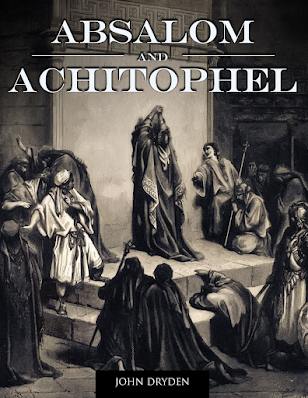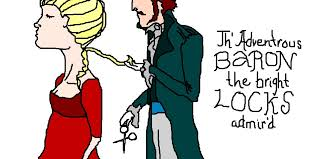Creation of Creature Frankenstein
1) What are some major differences between the movie and the novel Frankenstein?
The Modern Prometheus, by Mary Shelley is hailed as the first real science-fiction novel. Following Dr. Victor Frankenstein, it chronicles Frankenstein’s journey to create life and his clash with his creation after he succeeds. Touching on themes of ambition, lost of innocence, revenge, humanity, responsibility and creattion, Frankenstein is a dense but very worthwhile classic of its genre. However, it unfortunately has been largely displaced in the popular consciousness by its film adaptations. To celebrate its publication anniversary, here are five facts about Mary Shelley’s Frankenstein and its many differences to work that adapted its spooky tale.
1. The Framing Device
The original novel uses a framing device to tell its story. Captain Walton, a sailor in the arctic, picks up Victor Frankenstein on the ice and brings him aboard his ship. There, Frankenstein tells the tale of how he got here, turning the entire book into one long flashback. The Creature confronts Captain Walton at the end, vowing it will destroy itself via funeral pyre. However, Captain Walton is a character who is very rarely adapted, the framing device being almost entirely omitted from films based on or inspired by the book.
2. There was no Igor
Dr. Frankenstein’s hunchbacked assistant, Igor, is purely a creation of popular culture. In the original novel, Frankenstein worked entirely alone, creating the monster in a hidden room at his college. He kept the experiment entirely secret and had no outside help at all. The character of an assistant first appeared in 1931’s Frankenstein film in the form of Fritz, before being codified, ironically enough, by Mel Brook’s spoof film Son of Frankenstein.
3. The Monster Speaks
The Monster is a very different character from the mute, lumbering brute that was made famous in the Universal Horror films. Although he begins as a borderline feral creature after his ‘birth’, the Monster slowly learns language and reasoning over the course of the novel. He becomes extremely intelligent and articulate, often spending pages contemplating his unnatural existence. He even learns how to make clothes and uses weapons to defend himself as he survives in the wilderness. Compared to his film counterpart, he’s a wholly different beast.
4. The Creation is Offscreen
Doubtlessly one of the most famous in cinema is the creation of Frankenstein’s monster. Everything about it is iconic, from the slab the monster rests upon to the flashing laboratory equipment to the bolt of lightning that brings him to life to Frankenstein proclaiming “Its alive, its alive!” But the sequence in question actually isn’t in the original novel! Yes, the creation of the Monster in the book is entirely offscreen and left to the reader’s imagination. Oddly, this makes it more compelling to the imagination…how did Frankenstein do it? We’ll never know but it certainly makes good food for thought.
Victor Frankenstein leans over the inert form of the monster in his lab
5. Frankenstein Dies
In the novel, Victor Frankenstein pays for his hubris. After trekking the Monster to the Arctic, he collapses on the ice and is rescued by Captain Walton. But it is too late for him and after telling the Captain his story, he expires. Subsequent adaptations have spared Frankenstein his untimely demise, doubtlessly to keep a relatively happy ending.
2)who do you think is a real monster ?
Answer:In Mary Shelley's novel "Frankenstein," the character Victor Frankenstein can be seen as a complex figure who creates the creature but later regrets his actions. Some readers view Victor as a kind of "monster" due to his irresponsible pursuit of scientific knowledge and his abandonment of the creature. However, the novel raises questions about who the true monster is, as the creature also experiences isolation and mistreatment, which leads to his own acts of violence. Ultimately, the novel leaves it to the reader to decide who, if anyone, is the real monster. It's a theme that prompts moral and philosophical reflection.
While Victor Frankenstein creates the creature, often referred to as "Frankenstein's monster," the novel invites readers to consider whether the true monster is Victor himself. Victor's reckless pursuit of scientific knowledge and his abandonment of the creature after its creation lead to tragic consequences. Some argue that Victor's actions and neglect make him the real monster, while others emphasize the creature's loneliness and mistreatment, suggesting that society's rejection makes it the true victim. Ultimately, the novel explores the idea that both Victor and the creature have monstrous qualities, highlighting the destructive potential of unchecked ambition and societal prejudice.
For example, in Mary Shelley's "Frankenstein," the question of who the real monster is can be debated. Some argue that Victor Frankenstein's reckless pursuit of scientific knowledge and his abandonment of his creation make him the real monster, while others see the creature's violent actions as monstrous.
In real life, discussions about who the "real monster" might be often revolve around individuals or groups who have committed heinous acts or caused harm to others. These discussions are highly subjective and depend on the perspectives and values of those engaging in the conversation.
Ultimately, the designation of who the "real monster" is can vary widely depending on the specific context and the moral or ethical criteria being applied.
3)do you think the search for knowledge is dangerous and destructive?
Answer:The search for knowledge itself is not inherently dangerous or destructive. Knowledge can empower individuals and societies to make informed decisions, solve problems, and improve our understanding of the world. However, how knowledge is used and applied can have both positive and negative consequences. It's important to consider the ethical and responsible use of knowledge to ensure it benefits humanity rather than causing harm.




















